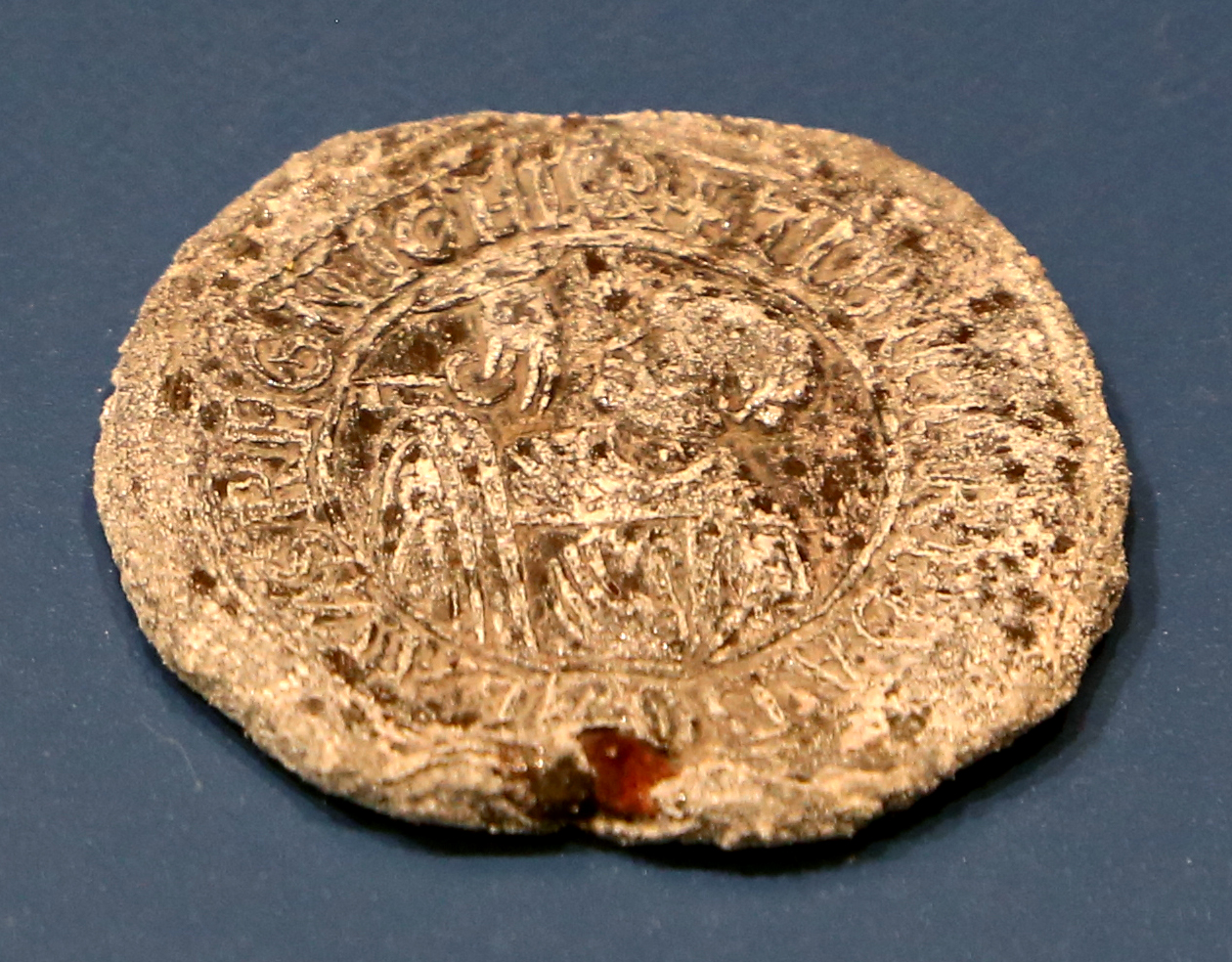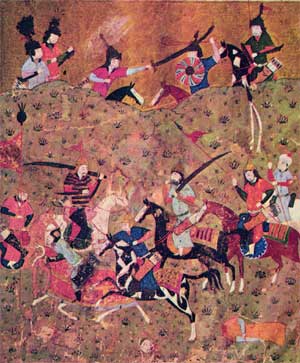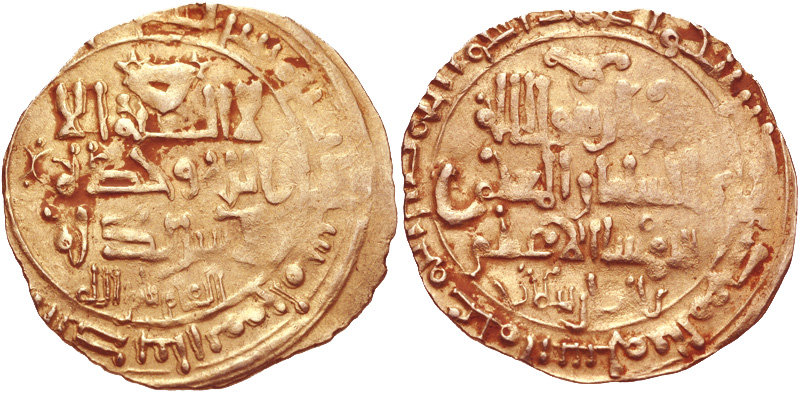|
1059
Year 1059 ( MLIX) was a common year starting on Friday (link will display the full calendar) of the Julian calendar. Events By place Byzantine Empire * November 22 – Emperor Isaac I Komnenos falls ill on a hunt and retires to a monastery after a 2-year reign. He abdicates the Byzantine throne and appoints Constantine X, a Paphlagonian nobleman, as his successor. * Fall – The Magyars cross the Danube River, together with several Pecheneg tribes, but are halted by Byzantine forces (approximate date). Europe * Peter Krešimir IV (the Great) is crowned king of Croatia and Dalmatia. His coronation is recognised by the Byzantine Empire who confirm him as the supreme ruler of the Dalmatian cites, i.e. over the Theme of Dalmatia – excluding the theme of Ragusa and the Duchy of Durazzo. * August 23 – Robert Guiscard, count of Apulia and Calabria, signs the Treaty of Melfi with Pope Nicholas II. Nicholas recognises the Norman conquest of southern ... [...More Info...] [...Related Items...] OR: [Wikipedia] [Google] [Baidu] |
Isaac I Komnenos
Isaac I Komnenos or Comnenus ( grc-gre, Ἰσαάκιος Κομνηνός, ''Isaakios Komnēnos''; – 1 June 1060) was Byzantine emperor from 1057 to 1059, the first reigning member of the Komnenian dynasty. The son of the general Manuel Erotikos Komnenos, he was orphaned at an early age, and was raised under the care of Emperor Basil II. He made his name as a successful military commander, serving as commander-in-chief of the eastern armies between and 1054. In 1057 he became the head of a conspiracy of the dissatisfied eastern generals against the newly crowned Michael VI Bringas. Proclaimed emperor by his followers on 8 June 1057, he rallied sufficient military forces to defeat the loyalist army at the Battle of Hades. While Isaac was willing to accept a compromise solution by being appointed Michael's heir, a powerful faction in Constantinople, led by the ambitious Patriarch of Constantinople, Michael Keroularios, pressured Michael to abdicate. After Mi ... [...More Info...] [...Related Items...] OR: [Wikipedia] [Google] [Baidu] |
Pope Nicholas II
Pope Nicholas II ( la, Nicholaus II; c. 990/995 – 27 July 1061), otherwise known as Gerard of Burgundy, was the head of the Catholic Church and ruler of the Papal States from 24 January 1059 until his death in 27 July 1061. At the time of his election, he was bishop of Florence. During his Papacy, Nicholas II successfully expanded the influence of the papacy in Milan and southern Italy. He was also responsible for passing papal election reforms which resulted in greater papal influence in electing new Popes. Early life Gerard of Burgundy was born in Chevron, in what is now Savoy. He was canon at Liège. In 1046 he became bishop of Florence, where he restored the canonical life among the clergy of numerous churches.Weber, Nicholas. "Pope Nicholas II." The Catholic Encyclopedia Vol. 11. New York: ... [...More Info...] [...Related Items...] OR: [Wikipedia] [Google] [Baidu] |
Constantine X Doukas
Constantine X Doukas or Ducas ( el, Κωνσταντῖνος Δούκας, ''Kōnstantinos X Doukas'', 1006 – 23 May 1067), was Byzantine emperor from 1059 to 1067. He was the founder and first ruling member of the Doukid dynasty. During his reign, the Normans took over much of the remaining Byzantine territories in Italy while in the Balkans the Hungarians occupied Belgrade. He also suffered defeats by the Seljuk sultan Alp Arslan. Reign Constantine's parents are not mentioned in any primary sources, but some scholars theorize that he was the son of Andronikos Doukas, a nobleman who served as ''strategos'' of Preslav during the reign of Basil II (). Historians often give his bithdate as 1006, as he is said to have died aged "slightly over sixty years". He was an academic, addicted to endless debates about philosophy and theology, and he gained influence after he married, as his second wife, Eudokia Makrembolitissa, a niece of Patriarch Michael Keroularios.Kazhdan 199 ... [...More Info...] [...Related Items...] OR: [Wikipedia] [Google] [Baidu] |
Robert Guiscard (by Merry-Joseph Blondel)
Robert Guiscard (; Modern ; – 17 July 1085) was a Norman adventurer remembered for the conquest of southern Italy and Sicily. Robert was born into the Hauteville family in Normandy, went on to become count and then duke of Apulia and Calabria (1057–1059), Duke of Sicily (1059–1085), and briefly prince of Benevento (1078–1081) before returning the title to the papacy. His sobriquet, in contemporary Latin and Old French , is often rendered "the Resourceful", "the Cunning", "the Wily", "the Fox", or "the Weasel". In Italian sources he is often Roberto II Guiscardo or Roberto d'Altavilla (from Robert de Hauteville), while medieval Arabic sources call him simply ''Abārt al-dūqa'' (Duke Robert). Background From 999 to 1042 the Normans in Italy, coming first as pilgrims, were mainly mercenaries serving at various times the Byzantines and a number of Lombard nobles. The first of the independent Norman lords was Rainulf Drengot who established himself in the fortress of Av ... [...More Info...] [...Related Items...] OR: [Wikipedia] [Google] [Baidu] |
Norman Conquest Of Southern Italy
The Norman conquest of southern Italy lasted from 999 to 1139, involving many battles and independent conquerors. In 1130, the territories in southern Italy united as the Kingdom of Sicily, which included the island of Sicily, the southern third of the Italian Peninsula (except Benevento, which was briefly held twice), the archipelago of Malta, and parts of North Africa. Itinerant Norman forces arrived in southern Italy as mercenaries in the service of Lombard and Byzantine factions, communicating news swiftly back home about opportunities in the Mediterranean. These groups gathered in several places, establishing fiefdoms and states of their own, uniting and elevating their status to ''de facto'' independence within 50 years of their arrival. Unlike the Norman Conquest of England (1066), which took a few years after one decisive battle, the conquest of southern Italy was the product of decades and a number of battles, few decisive. Many territories were conquered independ ... [...More Info...] [...Related Items...] OR: [Wikipedia] [Google] [Baidu] |
County Of Apulia And Calabria
The County of Apulia and Calabria (), later the Duchy of Apulia and Calabria (), was a Norman state founded by William of Hauteville in 1042 in the territories of Gargano, Capitanata, Apulia, Vulture, and most of Campania. It became a duchy when Robert Guiscard was raised to the rank of duke by Pope Nicholas II in 1059. The duchy was disestablished in 1130 when the last duke of Apulia and Calabria, Roger II of Sicily became King of Sicily. The title of duke was thereafter used intermittently as a title for the heir apparent to the Kingdom of Sicily. Creation Drogo of Hauteville was made "count" of Apulia & Calabria by Emperor Henry III, with territories lost by Guaimario IV of the Principality of Salerno. William I of Hauteville, who returned in September 1042 in Melfi, was recognized by all the Normans as supreme leader. He turned to Guaimar IV, Lombard, Prince of Salerno, and Rainulf Drengot, Count of Aversa, and offered both an alliance. With the unification of the two N ... [...More Info...] [...Related Items...] OR: [Wikipedia] [Google] [Baidu] |
Robert Guiscard
Robert Guiscard (; Modern ; – 17 July 1085) was a Norman adventurer remembered for the conquest of southern Italy and Sicily. Robert was born into the Hauteville family in Normandy, went on to become count and then duke of Apulia and Calabria (1057–1059), Duke of Sicily (1059–1085), and briefly prince of Benevento (1078–1081) before returning the title to the papacy. His sobriquet, in contemporary Latin and Old French , is often rendered "the Resourceful", "the Cunning", "the Wily", "the Fox", or "the Weasel". In Italian sources he is often Roberto II Guiscardo or Roberto d'Altavilla (from Robert de Hauteville), while medieval Arabic sources call him simply ''Abārt al-dūqa'' (Duke Robert). Background From 999 to 1042 the Normans in Italy, coming first as pilgrims, were mainly mercenaries serving at various times the Byzantines and a number of Lombard nobles. The first of the independent Norman lords was Rainulf Drengot who established himself in the fortress of ... [...More Info...] [...Related Items...] OR: [Wikipedia] [Google] [Baidu] |
Peter Krešimir IV Of Croatia
Peter Krešimir IV, called the Great ( hr, Petar Krešimir IV. Veliki) was King of Dalmatia and Croatia from 1059 until his death in 1074 or 1075. He was the last great ruler of the Krešimirović branch of the Trpimirović dynasty. Under Peter Krešimir IV, the Croatian realm reached its peak territorially, earning him the sobriquet "the Great", otherwise unique in Croatian history. He kept his seat at Nin and Biograd na Moru; however, the city of Šibenik holds a statue of him and is sometimes called "Krešimir's city" ( Croatian: ''"Krešimirov grad"'') because he is generally credited as the founder. Biography Early years Peter Krešimir was born as one of two children to king Stephen I (''Stjepan I'') and his wife Hicela, daughter of the Venetian Doge Pietro II Orseolo. Krešimir succeeded his father Stephen I upon his death in 1058 and was crowned the next year. It is not known where his coronation took place, but some historians suggest Biograd as a possibility. F ... [...More Info...] [...Related Items...] OR: [Wikipedia] [Google] [Baidu] |
Chaghri Beg
Abu Suleiman Dawud Chaghri Beg ibn Mikail, widely known simply as Chaghri Beg (989–1060), ''Da'ud b. Mika'il b. Saljuq'', also spelled Chaghri, was the co-ruler of the early Seljuk Empire. The name ''Chaghri'' is Turkic (Çağrı in modern Turkish) and literally means "small falcon", "merlin". Background Chaghri and his brother Tughril were the sons of Mikail and the grandsons of Seljuk. The Great Seljuk Empire was named after the latter, who was a Turkic clan leader either in Khazar or Oghuz states. In the early years of the 11th century, they left their former home and moved near the city of Jend (now a village) by the Syr Darya river, where they accepted the suzerainty of the Karakhanids in Transoxania (roughly modern Uzbekistan and southern Kazakhstan). After the defeat of the Karakhanids by Ghaznavids, they were able to gain independence. Biography Very little is known of Chaghri and Tughril's lives until 1025. Both were raised by their grandfather Seljuk until they ... [...More Info...] [...Related Items...] OR: [Wikipedia] [Google] [Baidu] |
Treaty Of Melfi
{{short description, Treaty of 1059 The Treaty of Melfi or Concordat of Melfi was signed on 23 August 1059 between Pope Nicholas II and the Norman princes Robert Guiscard and Richard I of Capua. Based on the terms of the accord, the Pope recognized the Norman conquest of Southern Italy. Moreover, the Pope recognized Robert Guiscard as Duke of Apulia and Calabria, and as Count of Sicily. See also * Battle of Civitate *List of treaties This list of treaties contains known agreements, pacts, peaces, and major contracts between states, armies, governments, and tribal groups. Before 1200 CE 1200–1299 1300–1399 1400–1499 1500–1599 1600–1699 1700–1799 ... External linksTimelines 1059 [...More Info...] [...Related Items...] OR: [Wikipedia] [Google] [Baidu] |
Alp Arslan
Alp Arslan was the second Sultan of the Seljuk Empire and great-grandson of Seljuk, the eponymous founder of the dynasty. He greatly expanded the Seljuk territory and consolidated his power, defeating rivals to the south and northwest, and his victory over the Byzantines at the Battle of Manzikert, in 1071, ushered in the Turkoman settlement of Anatolia. "But the Battle of Manzikert opened Asia Minor to Turkmen conquest" For his military prowess and fighting skills, he obtained the name ''Alp Arslan'', which means "Heroic Lion" in Turkish. Early life Alp Arslan was the son of Chaghri and nephew of Tughril, the founding Sultans of the Seljuk Empire. His grandfather was Mikail, who in turn was the son of the warlord Seljuk. He was the father of numerous children, including Malik-Shah I and Tutush I. It is unclear who the mother or mothers of his children were. He was known to have been married at least twice. His wives included the widow of his uncle Tughril, a Kara-Khanid pr ... [...More Info...] [...Related Items...] OR: [Wikipedia] [Google] [Baidu] |
January 24
Events Pre-1600 * 41 – Claudius is proclaimed Roman emperor by the Praetorian Guard after they assassinate the previous emperor, his nephew Caligula. * 914 – Start of the First Fatimid invasion of Egypt. *1438 – The Council of Basel suspends Pope Eugene IV. *1458 – Matthias Corvinus is elected King of Hungary. *1536 – King Henry VIII of England suffers an accident while jousting, leading to a brain injury that historians say may have influenced his later erratic behaviour and possible impotence. 1601–1900 *1651 – Arauco War: Spanish and Mapuche authorities meet in the Parliament of Boroa renewing the fragile peace established at the parliaments of Quillín in 1641 and 1647. * 1679 – King Charles II of England dissolves the Cavalier Parliament. *1742 – Charles VII Albert becomes Holy Roman Emperor. * 1758 – During the Seven Years' War the leading burghers of Königsberg submit to Elizabeth of Russia, thus for ... [...More Info...] [...Related Items...] OR: [Wikipedia] [Google] [Baidu] |
.jpg)


.png)



